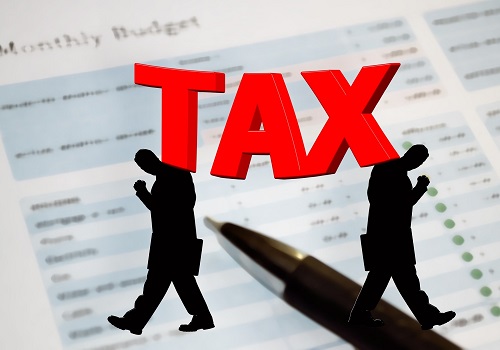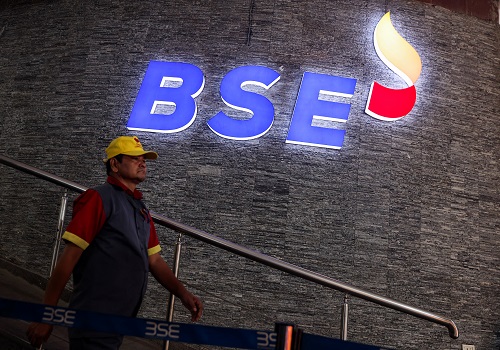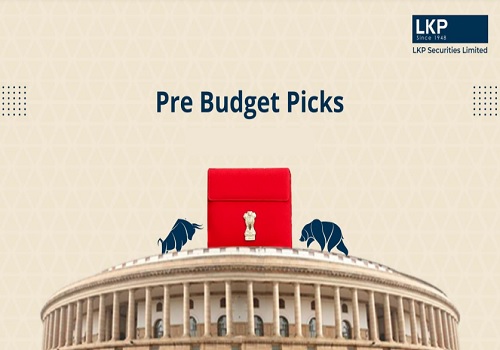Union Budget 2020-2021 : Government spending to support growth By Angel Broking

Follow us Now on Telegram ! Get daily 10 - 12 important updates on Business, Finance and Investment. Join our Telegram Channel
https://t.me/InvestmentGuruIndiacom
Download Telegram App before Joining the Channel
Government spending to support growth
Post the Covid-19 pandemic there are expectations that the budget would contain measures to boost the economy. In the aftermath of the Covid-19 pandemic, the Government had undertaken targeted fiscal measures aimed at supporting the most critical sectors given the lack of fiscal space to provide support to the economy in the form of large cash spending.
We expect the Union Budget 2021-22 to focus on boosting growth through a combination of higher spending along with targeted tax breaks, which will help boost consumption. We expect continued focus on critical sectors like Housing infrastructure and manufacturing along with continued thrust on boosting the rural economy.
As per the RBI, real GDP is expected to contract by 7.5% in FY2021, which will have an adverse impact on Government finances in FY2021. As a result, fiscal deficit is expected to be significantly higher than the Budget estimates of 3.6% for FY2021 as spending is likely to be in line with budgeted estimates. However the Government will try and keep its gross borrowing program within the revised figure of `12 Lakh cr. which will be positive for the markets.
While total receipts for the financial year till Nov’20 are down by 17.9% YoY to `8,309 Lakh cr., expenditure is up by 4.7% YoY to `19,064 lakh cr. led by a 12.8% increase in capital expenditure. With improvement in tax collections from Q3FY21 we expect Government spending will remain close to budgeted levels.
Major expectations from the Union Budget
1) Infrastructure - Infrastructure development will be one of the priorities of government’s efforts to revive economy, to stimulate growth and create jobs. Government key focus will be on defense, railway and road infrastructure. Addition to the National Infrastructure Pipeline is also possible in the budget.
2) Housing – There is a possibility that the Government may increase the deduction available on interest paid on self occupied house from current levels of `2 Lakh. There is also strong possibility of increased allocation to PMAY and extension of tax holiday for affordable housing projects till March 2022.
3) Manufacturing – In order to boost the manufacturing sector we expect the Government to announce hike in import duties on more items along with expanding the scope of the `1.46 Lakh cr. PLI schemes to include more sectors.
4) Personal income tax – The Government can try and address the slump in consumer spending by providing tax breaks to the middle class. This Government may extend the new optional tax regime to individuals earning greater than `15 Lakh per annum and also increase the limit of the deductions under Sec 80 C for individuals under the old income tax regime.
5) Auto - While there has been a strong rebound in the Auto sector from the Covid lows led by 2 wheelers, PV and Tractors, the MHCV space still has a long way to recover to pre Covid levels. There is high probability that the Government will announce an incentive based scrappage plan in the budget which will be beneficial for the MHCV space.
Gross borrowing expected to be within revised figure of `12 Lakh cr.
Due to the shortfall in tax collections it is given that fiscal deficit for FY2021 will be well ahead of budget estimates of 3.6% for the year. However markets are expecting fiscal deficit figure for FY201 will not exceed 7.0% of GDP given strong rebound in tax revenues in 2HFY2021.
Fiscal deficit till November 2020 is up by 33.0% YoY and stood at 135% of full year’s budgeted estimates. There has been a shortfall in revenue receipts till date which along with lower disinvestment proceeds which will lead to significant revenue shortfall for the Government in FY2021.
Total receipts for the financial year till Nov’20 are down by 17.9% YoY to `8,309 Lakh cr. Revenue receipts are down by 17.3% YoY while non debt capital receipts are down by 37.2% YoY. Tax revenue for the financial year till date is down by 8.3% YoY to `6.9 Lakh cr. and has held up much better than expected.
The Government has already increased its gross borrowing plan to `12 Lakh crore from the budgeted `7.8 Lakh cr. in light of revenue shortfall due the Covid-19 pandemic. We think that the Government will try and stick to the revised gross borrowing figure and can shift some of the spending off balance sheet if required.
Government spending to remain along budgeted lines
Despite the shortfall in revenues the Government has so far shown no signs of cut back in spending. Till Nov’20 total Government expenditure is up by 4.7% YoY to `19.1 Lakh cr. While revenue expenditure are up by 3.7% YoY to `16.7 Lakh cr., capital expenditure are up by 12.8% YoY to `2.4 Lakh cr.
While the Government has in the past tried to keep its fiscal deficit figure in check by cutting back expenditure, we do not envisage any cut back in spending this year. Boosting growth is of paramount importance for the Government especially in the backdrop of improving economic conditions and tax collections. The economic rebound from the Covid lows has been quicker than expected which has led to GST collections registering a growth of 7.7% YoY to `3.25 Lakh crore in Q3FY2021.
With the economy showing continued signs of improvement we expect tax collections to improve further in the fourth quarter which will provide revenues for the Government to help meet its budgeted expenditure. However it is possible that the Government could either rollover of some expenditure to the next financial year or shift some of the expenditure off balance sheet.
As per various rating agencies real GDP is expected to expand by 9-10% in FY2022 which should result in nominal GDP growth of ~14%. As a result tax collections are expected to rebound in FY2022 due to strong growth in nominal GDP as well as increased tax buoyancy. This should help the Government increase spending in FY2022 while ensuring a lower fiscal deficit as compared to FY2021. Markets are also expecting that the Government will provide a revised medium term glide path for lowering fiscal deficit in the Union Budget.
Above views are of the author and not of the website kindly read disclaimer










Tag News

On the higher side, immediate resistance is seen around 36000 - 36200 levels - Angel One












